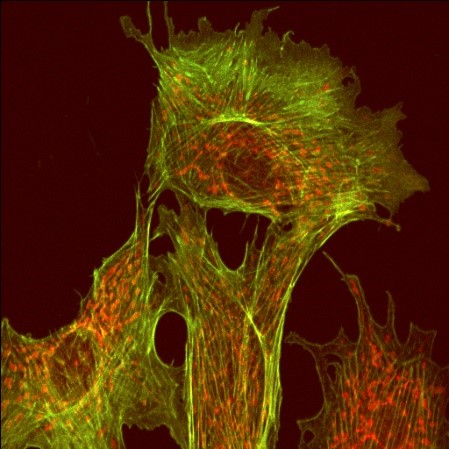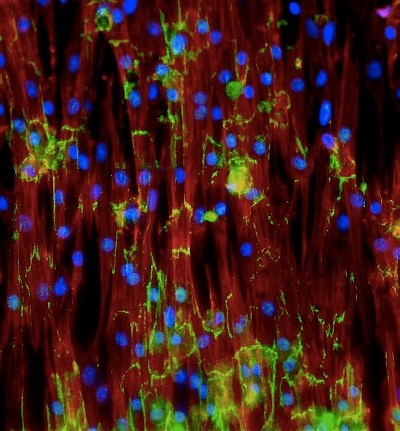
The cytoskeleton is a collection of fibers that gives shape and support to cells, like the skeleton does for our bodies. It also allows movement within the cell and, in some cases, by the entire cell. Three different types of fibers make up the cytoskeleton: actin filaments, intermediate filaments, and microtubules.
Powering Muscles
Actin filaments contract or lengthen to give cells the flexibility to move and change shape. Along with the protein myosin, they’re responsible for muscle contraction, including voluntary movement and involuntary muscle contractions, such as our heartbeats. Actin filaments are the thinnest and most brittle of the cytoskeletal fibers, but they’re also the most versatile in terms of shape.
Strength and Structure

Intermediate filaments are made of different proteins depending on their location and function in the body. Some types of these filaments give strength to nails, hair, and the outer layer of skin (not to mention animal claws and scales). Others provide structure in nerve cells, muscle cells, the heart, and other internal organs. Intermediate filaments get their name from being thicker than actin filaments but thinner than microtubules.
Directing Movement

Microtubules act as a structural support for the cell and are the thickest cytoskeletal fibers. During cell division, microtubules help direct chromosomes, which contain genetic information, to the daughter cells. Microtubules also serve as tracks for transporting countless molecules and materials throughout the cell. Flagella—long, tail-like structures that sperm cells use to move—get their structure from microtubules, as do shorter cell projections called cilia that move fluid or mucus.
NIGMS-Funded Cytoskeleton Research
Many scientists supported by NIGMS study the cytoskeleton. Some of these researchers are:
- Investigating how actin is affected by and responds to infections
- Determining how a certain type of intermediate filament promotes wound healing
- Modeling how microtubules shift between different states during cell division and how this shifting is altered by certain cancer drugs—work that could ultimately support the development of drugs with fewer side effects
Learn about other scientific terms with the NIGMS glossary.

